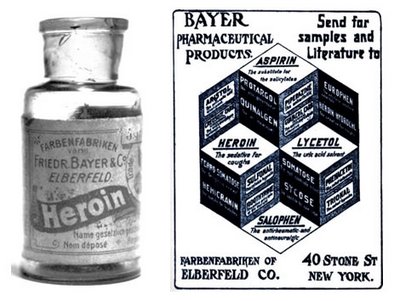Heroin Addiction

Heroin History
Heroin history begins with the opium poppy being cultivated in lower Mesopotamia as long ago as 3400 BC. The chemical analysis of opium in the 19th century revealed that most of its activity could be ascribed to two ingredients, codeine and morphine.
Heroin history shows that it was first synthesized in 1874 by C.R. Alder Wright, an English chemist working at St. Mary's Hospital Medical School in London, England. He had been experimenting with combining morphine with various acids. He boiled anhydrous morphine alkaloid with acetic anhydride over a stove for several hours and produced a more potent, acetylated form of morphine, now called diacetylmorphine. The compound was sent to F.M. Pierce of Owens College in Manchester for analysis.
However, as heroin history goes and is often the case with scientific discovery, Wright's invention did not lead to any further developments. Heroin's fame would only begin to grow after it was independently re-synthesized 23 years later by another chemist, Felix Hoffmann. Hoffman was working at the Bayer pharmaceutical company in Elberfeld, Germany, where the head of his laboratory was Heinrich Dreser. Dreser instructed Hoffmann to acetylate morphine, with the objective of producing codeine, a natural derivative of the opium poppy, similar to morphine but less potent and held to be less addictive. But instead of producing codeine, the experiment produced a substance that was actually three times more potent than morphine. Heroin history shows that Bayer would name the substance "heroin", probably from the word heroisch, German for heroic, because in field studies people using the medicine felt "heroic".
Heroin history from 1898 through to 1910 the drug was marketed as a non-addictive morphine substitute and cough medicine for children. Bayer marketed heroin as a cure for morphine addiction before it was discovered that heroin is converted to morphine when metabolized in the liver. The company was somewhat embarrassed by this new finding and it became a historical blunder for Bayer. Heroin history notes that as with aspirin, Bayer lost some of its trademark rights to heroin following the German defeat in World War I.

In the United States, heroin history was changed by the Harrison Narcotics Tax Act. This Tax Act was passed in 1914 to control the sale and distribution of heroin. The law did allow heroin to be prescribed and sold for medical purposes. In particular, addicts could often still be legally supplied with heroin. Heroin history changed again in 1924, the United States Congress passed additional legislation banning the sale, importation or manufacture of heroin in the United States. It is now a Schedule I substance, and is thus illegal.
Heroin history of how the drug was used has changed much over the years. Heroin can be taken or administered in a number of ways, including snorting and injection. It may also be smoked by inhaling the vapors produced when heated from below (known as "chasing the dragon").
Heroin history shows that many users dissolve the drug together with cocaine in a so-called "speedball" or "snowball", which is injected intravenously. This causes an even more intense rush but is more dangerous than heroin alone because the mixture of short-acting stimulant with longer-acting depressant increases the risk of overdosing on one or both drugs.
Heroin Information
- Signs of Heroin Use
- Social Effects of Heroin
- Heroin and Health Risks
- Heroin History
- Injecting Heroin
- Smoking Heroin
- Heroin Statistics
- Black Tar Heroin
- Heroin Pictures
